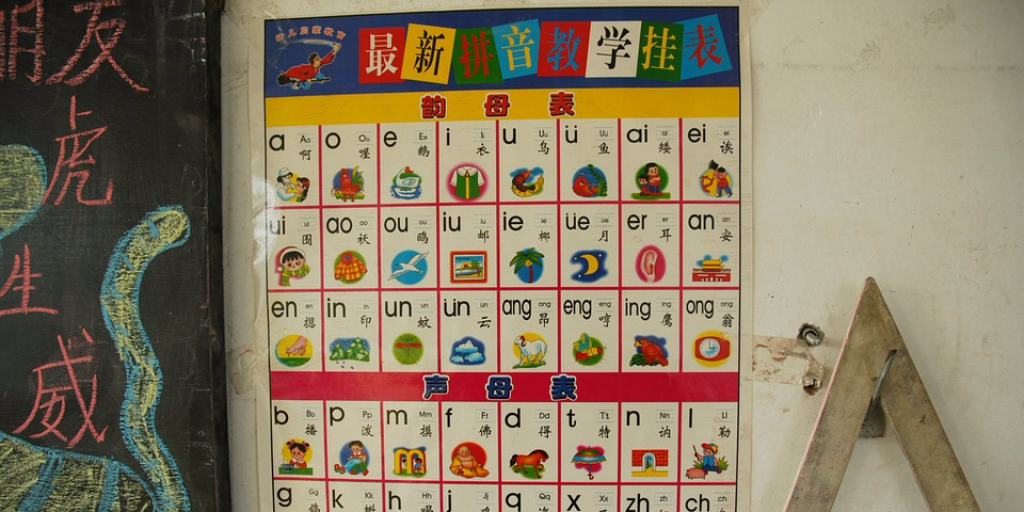Teaching a new class is always a daunting prospect, even for the most experienced of teachers. As you try to overcome your own nerves, it’s easy to forget that your students may be just as nervous to have a new teacher. This is particularly the case in China, where many students have never even seen a foreigner, let alone been taught by one. You should take this into account when teaching Chinese students and make sure you deliver your lessons appropriately.
While the language barrier is probably your main concern, it’s vital to realise that the cultural barrier is just as important. Cultural values and ideas surrounding education mean that Chinese teaching methods differ vastly to those used in the West and influence how a foreigner should approach teaching Chinese students. As a foreign teacher, it’s important to acknowledge this and take measures to ease students in and build their confidence.
These top 5 tips will help you create successful lesson plans, tailored to teaching Chinese students:
1. Ease them in
In a typical Chinese classroom, attention is focused solely on the teacher, while students passively consume information. It’s rare for students to ask or answer questions and they are discouraged from making mistakes, making it quite disorientating when a foreign teacher switches the focus to the class.
You’ll find that every class has a handful of confident students who wish to answer questions and take part activities, while most of their classmates shy away. The passive learning method in China means that the latter is more common and that it’s vital you ease your students in gently.
When teaching Chinese students, it’s important you demonstrate from the start that making mistakes is acceptable. Reward effort as well as correct answers and give constructive responses to wrong ones. “Almost” and “good try” are suitable responses that show you appreciate the attempt. If you’re feeling particularly confident, uttering a few words in Mandarin is a good way to break the ice and show that you aren’t afraid of making mistakes.
For the first few lessons at least, it’s good to choose the confident students to participate in your activities. Often, once their shy classmates see their friends having fun and receiving praise regardless of their answers, they will want a turn. Though it’s okay to choose students for activities, never pressure anyone into doing something they don’t want to. This is likely to alienate the student and cause them to lose trust in you.
In a particularly timid class, small group activities are good for getting students to talk and building confidence.
By taking such measures when teaching Chinese students, you’re likely to notice an increase in confidence. It might take time, but it’s certainly worth the effort when previously shy students begin volunteering themselves.
2. Develop a Routine
Your students may struggle to get to grips with the new teaching method. A foreign accent, a new structure and interactive activities combine to make some feel uneasy with the new classroom environment.
A good way to overcome this is by establishing a routine and lesson structure from early on. Starting the class with a song, ending with a game and using consistent behaviour management techniques are all good examples of routines that work well for teaching Chinese students.
By introducing a structure, students will quickly become familiar with the way you work and will come to expect certain things to happen at specific points of the lesson. This may sound repetitive, but routine works well when teaching Chinese students, who are used to learning by rote. Moreover, it’s a great way to overcome the language barrier and reduce the time spent explaining what comes next!
Developing a routine is also an effective classroom management tool. If you usually end your class with a game or video to reward good behaviour, students will make a conscious effort to behave, without instruction. This routine is particularly effective with younger students, where the language barrier poses more of a challenge.
By establishing a routine for your classes from early on, students will find it easier to adapt to your teaching methods. The familiarity that routine provides will comfort your class and help them better follow your lessons.
3. Use Chinese Learning Methods to your Advantage
The purpose of your role may be to introduce a western teaching style to the Chinese classroom, but that doesn’t mean you shouldn’t use Chinese learning methods to your advantage. After all, Chinese students respond well to certain techniques and this won’t change simply to suit you.
Students in China commonly learn through repetition and tend to have an incredible ability to recall information acquired this way. It might sound boring and inconsistent with the concept of ‘fun’ foreign teacher classes, but it’s an important technique to help your students learn.
Two key examples are grammar and vocabulary. By repeating words and phrases over and over, students will rapidly master them. Of course, you can step away from Chinese teaching methods by putting your own creative spin on this; games like Pictionary, Bingo and Charades all require students to repeat target vocabulary through more active means. Alternatively, you might ask older students to form their own answers to questions repeatedly using target grammar structures or words.
Such activities will still be challenging for Chinese students, but by maintaining a familiar method of learning, you can put them at ease and aid their ability to acquire information.
4. Establish Goals
Chinese education is very competitive, and you’ll find that students are constantly trying to get ahead of their classmates. The common belief that knowledge is best acquired through listening to the teacher causes many to consider foreign teacher classes less useful or important than a Chinese teacher’s. Consequently, some students may misbehave, thinking that your class time could be better spent doing something else, like their homework. This is common behaviour experience by foreigners teaching Chinese students. You shouldn’t take it to heart, but it’s important to try and minimise this feeling among your students from early on.
A key way to do this is by setting goals. Chinese students, particularly older ones, like to know they are improving, and so respond well to targets. By showing students what you expect them to achieve by the end of a semester or topic, they will better understand the purpose of your classes and hopefully appreciate your worth. Once students realise you are helping them towards success, they will respect you more and be keen to participate.
Effective goals include:
• Being able to converse on a certain topic
• Understanding a video/clip
• Taking part in a debate
You could even increase student involvement and ask them what they hope to achieve from your classes. Students who are nearing exam time will appreciate this and it helps ensure everyone benefits from your lessons.
5. Understand their Culture and Language
This is key for any ESL teacher, anywhere in the world. Each country has its own values and beliefs, which greatly influence the education system, and China is no different.
Before teaching Chinese students, it’s important you research key cultural beliefs that influence certain behaviour. Understanding what makes students reluctant to ask questions, fear making mistakes or show little concern over cheating, will help you better understand your students and overcome barriers in the classroom.
Similarly, an understanding of your student’s native language is helpful. Don’t worry, you don’t need to speak or understand Mandarin. In fact, in many cases not being able to is an advantage when teaching Chinese students. However, it’s good to familiarise yourself with key aspects of the language, that influence your students’ mistakes in English. Examples include grammar and sounds; in Mandarin the characters for ‘he’ and ‘she’ are written differently, but pronounced the same. Therefore, Chinese learners of English have a tendency to mix up these pronouns when speaking. Similarly, Mandarin doesn’t use the ‘th’ sound, causing native speakers difficulty when pronouncing English words like ‘the’ and ‘thank you’. They tend to compensate with an ‘s’ sound, which explains why you’re teaching Chinese students, you might hear them say, ‘sank you’.
As a native English speaker with little to no understanding of Mandarin or Chinese culture, it’s easy to get frustrated with your students. Though, by making an effort to appreciate local culture and language, you’ll become more patient with and understanding of mistakes. This is important for effectively teaching Chinese students and helping them overcome difficulties with learning English.
In Summary
Though your purpose is to teach your students, it’s equally important that you learn from them. Foreign teachers should be conscious of local culture, customs and education and use this knowledge to help their students adapt to the new teaching method. You can’t simply expect your students to take to your lessons without a little help from you. Remember, the key to successfully teaching Chinese students is understanding and catering for your their needs!
Ready to take the ESL classroom by storm? Here’s more information on our program in China
Interested in considering other options? Through our other brand Impact Teaching, we offer teaching jobs in Vietnam, Thailand, Cambodia or Poland or send in an application.





Leave A Comment
You must be logged in to post a comment.